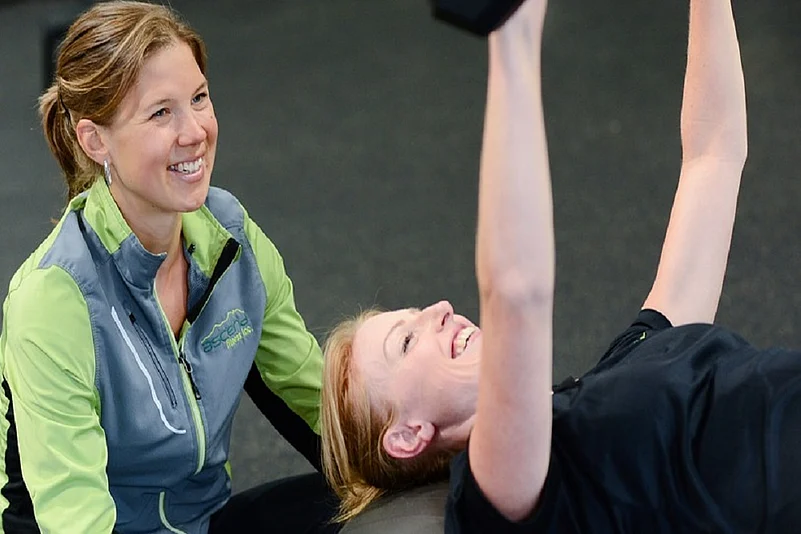Deepa and Allen had had it with their unhealthy lifestyle. Being friends, they started on their new health regime together, right from controlling food portion sizes to counting calories to cutting out binge weekends. They even joined the same gym. Allen chose to weight / strength train, which he would supplement with cardio. Deepa felt weights are not for girls and decided to stick to the treadmill, cycle and cross-trainer bike.
A month on, Deepa had lost three kilos, and Allen just one. Allen was a bit disappointed, but his gut feeling said he was on the right track. Deepa was jubilant, and kept giving Allen the ‘I told you so’ look, irritating him no end.
Three months later, it was Alle's turn to laugh (which he didn't). Deepa’s weight loss had
stagnated. However, Allen was five kilos lighter and was looking a lot leaner and muscular. His
stamina and strength had improved, and his blood pressure and cholesterol levels had decreased.
What happened here?
More Muscle Burns More Fat
Many physiological reasons helped Allen lose weight. The biggest factor was that he acquired muscle mass with weight and strength training. What appeared to be a loss of one kilo of body weight in the first month was actually a loss of two kilos of fat and gain of one kilo of muscle.
Meanwhile, Deepa lost three kilos of fat and muscle combined, but didn’t gain any new muscle
fibres.
How does that matter?
Well, increased basal metabolism is probably the most obvious advantage of acquiring muscles. Simply put, the more muscle you carry, the more calories you burn. So, as Allen built more muscle, the rate at which he burnt calories went up.
Muscle is denser than fat. A kilo of muscle takes less space than a kilo of fat. The density of muscle is 1.06 kilo/liter of space while fat is 0.9196 kilo / litre of space. So when Allen lost 10 kilos of fat and gained 5 kilos of muscle, though he lost only 5 kilos on the scale, he had actually become about 6.1 litre smaller.
This is also why you must stop taking your weighing scale as the absolute measure. Learn to trust your mirror and how you feel in your body.
Strength Training Doesn’t Make Women Mannish Allen tried to convince Deepa to strength train. She had her reservations. She wanted to look like Katrina Kaif, not Arnold Schwarzenegger. She was scared that her body would develop extreme bulges that would ruin her femininity.
Nothing is farther from the truth. Women cannot look or be as muscular as men because they have relatively minor quantities of testosterone in their bodies. The stereotypical image of the female a bodybuilder that you see on the Internet is, more often than not, of models who chronically (mis)use androgenic compounds, which are synthetic versions of testosterone.
The Truth of the Matter
In reality, strength training is more important for women than men. It increases bone density and
reduces the risk of osteoporosis. It elevates endorphins, which improves mood and reduces stress. It also enhances body composition, hence self-esteem.
The challenge is to approach strength training without preconceived notions. Strength training is not synonymous with bodybuilding or powerlifting. It is a training model that builds health, fitness and performance in everyday people like us. Exercise is indispensable in this day and age. And if you have to choose, strength training is perhaps the best option.
We will be back next week on how to start a strength-training program. Keep watching this
space!
















